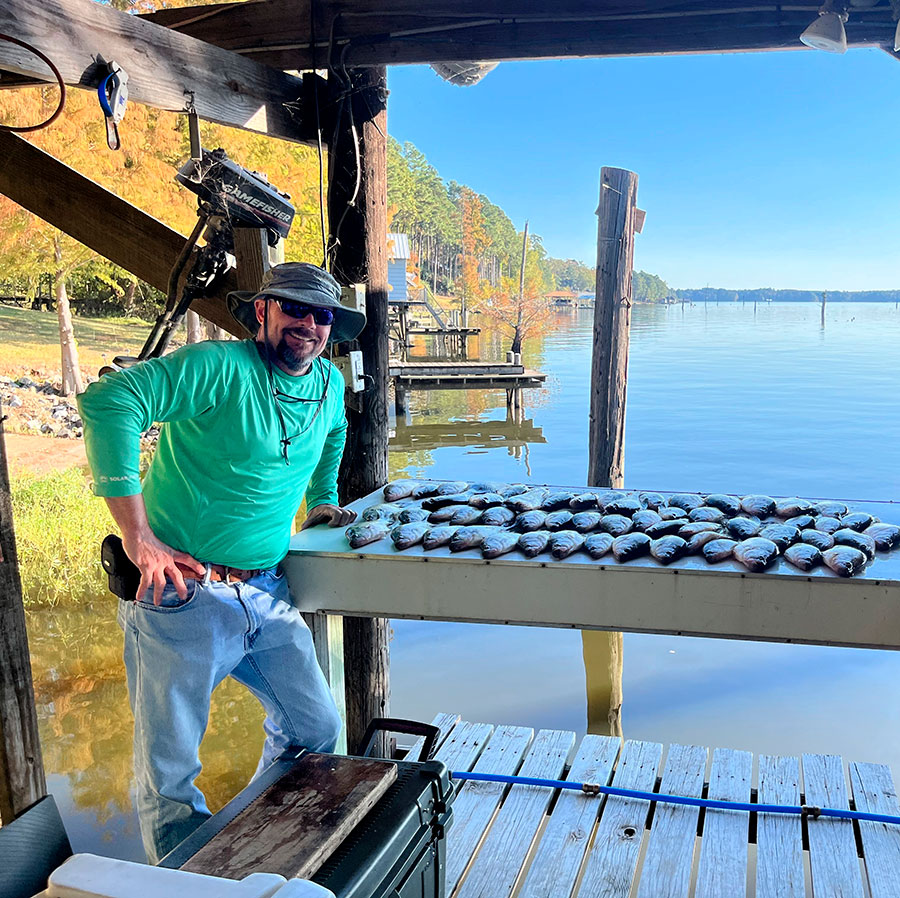
When it comes to the best crappie fishing lakes in Louisiana, there’s one that consistently steals the spotlight — Lake D’Arbonne. This gem boasts one of the state’s most abundant populations of quality crappie, even drawing the attention of national crappie tournament organizers. Boasting a vast 15,000 acres, it might seem like a daunting challenge for any angler, but not for West Monroe native Brad Black.
Rather than letting the lake’s size intimidate him, Black turns it into his playground.
“I like D’Arbonne because it gives fishermen so many options to fish,” he said. “There is a ton of visible and non-visible structure. There are lots of different depth changes, and the lake is big enough that you can get away from the crowds.”
In winter, crappie gather in the deeper waters of the channel. They either suspend in open water or stack up on trees along the channel edges. Black’s approach is simple yet effective. Steering clear of heavy boat traffic, he trolls the channel with a single pole and jig, methodically searching for the elusive fish.
“In the winter, I start in the middle of the channel and zig zag back and forth up the edges until I find the fish either in the middle or on structure on the edges,” Black said.
Simple setup
Black employs a straightforward setup that any angler can acquire at their local sporting goods store. He uses a B’n’M eleven-foot jig pole with a Pflueger reel strung with 6-pound monofilament. The choice of L&B hair jigs with a number five weight about eighteen inches above the jig, coupled with a Crappie nibbles, completes his successful fishing setup. The crappie niblet is a small but important part of the rig, which helps to entice more aggressive strikes.
“I always use a crappie nibbles,” Black said.
As the water temperature begins to rise in March, crappie follow a predictable spring pattern. Black continues using the same winter techniques, but shifts his focus to the creeks serving as spawn staging areas.
“As water temperatures start to rise, I go to the 14 to 18-foot sloughs that dump into the main channel first, then move to the flats in 8 to 12 feet of water,” Black said.
With rising temperatures, crappie gradually move from their staging areas into the shallows to spawn. Black employs the same single jig pole and hair jig to target these pre-spawn fish. Drawing from his two decades of experience on the lake, he shares a key insight.
“When the water temperature gets to 60 degrees, I go to the Cypress trees in 3 to 4 feet of water,” he said. “The cypress trees that bud first are the ones I concentrate on. I normally do better on green trees and rarely catch on dead trees.”
Armed with this valuable information, even anglers new to the lake stand a good chance of filling their ice chest with delicious crappie. So, prepare your frying pan and embark on a trip to D’Arbonne to savor some of the finest crappie fishing that Louisiana has to offer.


